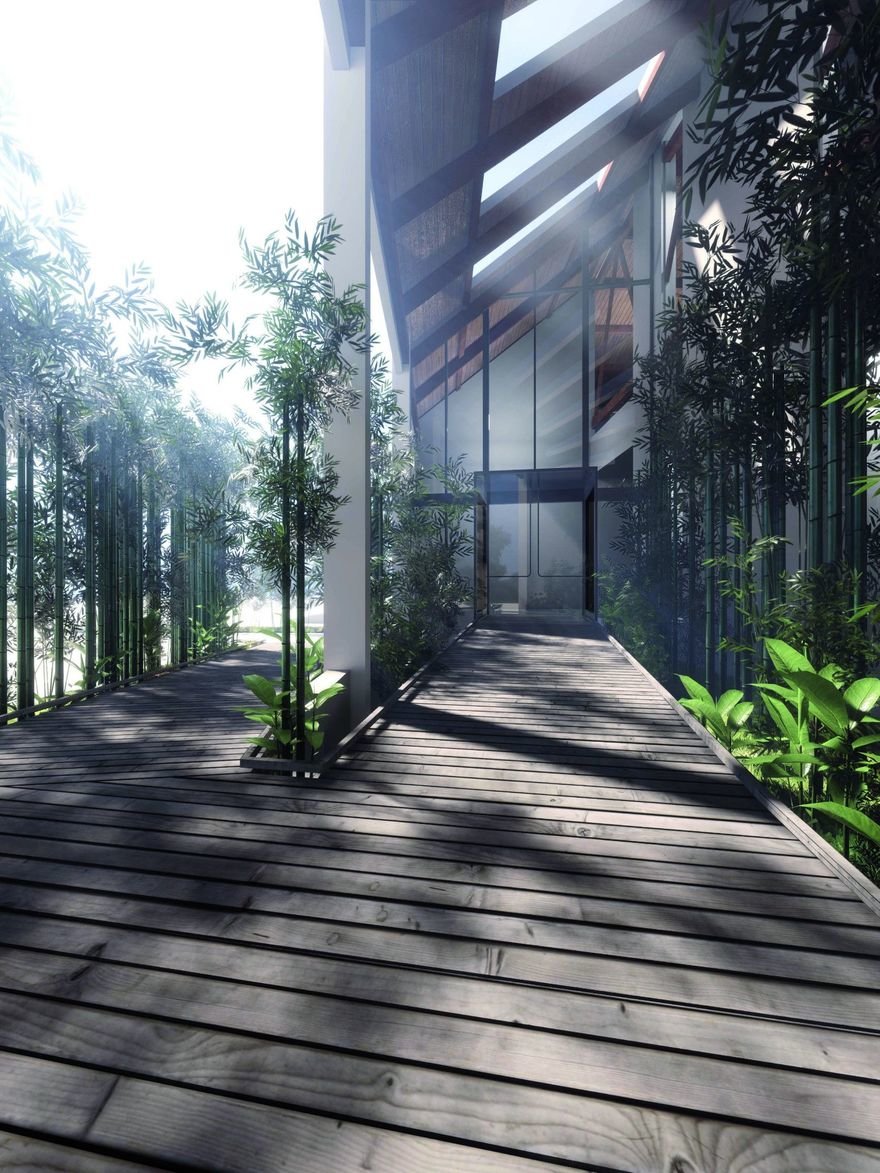Finally, A Place To Compost Your Body When You're Done With It

If I am to think of composting a human body (not something I typically dwell on), which this year became a legal burial practice in the state of Washington, I imagine a rural scene. A shrouded body in a forest, or in an untouched field perhaps, but always in an unpopulated landscape. A wilderness might be a comforting place to dissolve into the earth but such places are an increasingly rare luxury in our world. While the idea of human-composting in and of itself might evoke uneasiness, how could one ever imagine a composting site in a dense city?
This is a question that Recompose, the Seattle-based, human composting start-up, has had to confront. The responsibility of manifesting their urban human composting facility has been given to architects at Olson Kundig, who will next year unveil this site for eco-friendly burial. Early renderings from the project reveal that the facility in its appearance is modern, open, and ironically full of life.
Living walls, and vibrant vegetation contrast with the colorless burial pods and grey surfaces. While the interiors and architecture of Recompose's facility appear to be practically designed and built to be considerate of people's space for ceremony or ritual, one cannot help but think the that utilitarianism of the interiors might feel alienating and a bit brutal for those grieving the loss of their loved ones.

Regardless of where one chooses to be composted, the newly legal practice is a great burial option for several reasons. The carbon footprint of traditional burials in the US is surprisingly high, and simply said, our lifeless corpses are taking up far too much space. It is nearly a crisis in parts of Europe, where cremation has increasingly become the norm. In Greece, for example, renting graves has become typical. It is a problem in many cities around the world, and human composting provides a burial that is better for land-use, for soil health, and significant carbon reduction.
Recompose is capitalizing on that fact. Katrina Spade, CEO and founder of Recompose, has done years of research to develop a method of human composting that efficiently breaks down the body for maximum soil health. The process is also cheaper than typical burial, costing about $5000 dollars, according to Recompose's website. (Though it still feels like a bit much for letting one's corpse decompose naturally.) When one's body is done converting into soil in the "Recomposition Vessels," the family will be able to take some of the soil home while excess is used to nourish conservation land. The whole process takes about 30 days.


This method of 'recomposing' is specifically designed for the city, where land is scarce, and the 'vessels' offer modular and reusable space for the process. The Recompose facility will be home to many living plants, from the entrance ramp shrouded by vegetation, to the modular tree planters that can be moved around the space, all to reassure visitors of the life that benefits from this process.
Yet I can't help but be a bit skeptical of how much comfort all this greenery really provides. Especially as they contrast against the hard grey surfaces and the white uniformity of the 'vessels'. It has a utilitarian aesthetic that relies entirely on the vegetation and the openness of the interior to comfort the bereaved. While the space provides room for ceremony, it doesn't seem to offer much in recognizing the individuality of the dead. Understandably, relating a person you loved to a tree or a plant can be pretty difficult. Without actually being in the building and only in observing these renderings, this fact doesn't seem to be acknowledged by the design of this space.

I, and many other people of my generation who are particularly concerned about the decline of our Earth's capacity to sustain life as we know it, would likely be glad to give our body over to the ecosystem when we're done with it. For many though, the fact that in death, one's body won't be as destructive to the earth as it was in life, is likely not enough to convince them to take up this offer. Many people from multitudes of cultural backgrounds are unsurprisingly quite sensitive about the treatment of the deceased, and adopting new rituals is likely to take some time.
Designing the space and aesthetics of this process is a fundamental part of shifting cultural perceptions of human composting. While it is remarkable to see Recompose create an urban space for human composting, making the process widely appealing will be an unenviable, but necessary challenge for design to engage.
-
o1Favorite This
-
Q4Comment
K
{Welcome
Create a Core77 Account
Already have an account? Sign In
By creating a Core77 account you confirm that you accept the Terms of Use
K
Reset Password
Please enter your email and we will send an email to reset your password.


Comments
This would go great with my Clipped Toenail Shrine.
Keep up the good work.
I wish countries would start implmenting systems on this like organ donations.
I wonder back when it became like a law/business to bury people? I assume initially was due to disease spreading. It's not a low-cost industry; we just cremated my father-in-law and that was about $3,500. Burial was free because he was a military veteran. That's a lot of money.